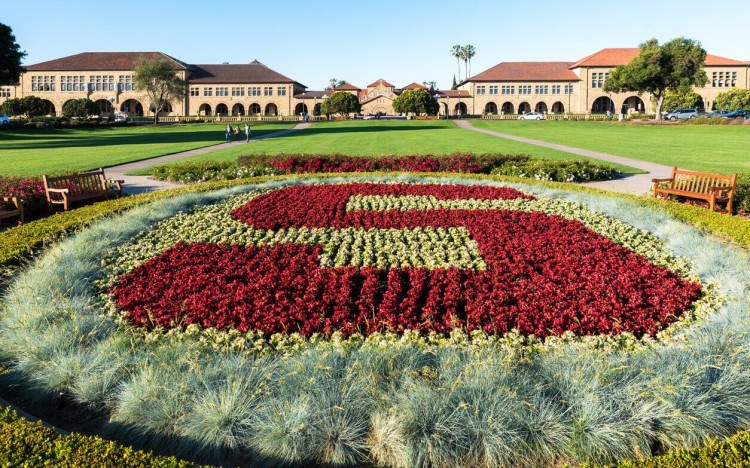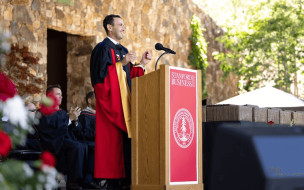The same schools make up the top-10 positions in the prestigious ranking as last year. But there were swings at the top of the table, with China Europe International Business School (CEIBS) rising to fifth from eighth in 2018, its highest ever position. Harvard Business School shot up to second place, after falling to fifth last year, but was once again trumped by Stanford Graduate School of Business, which regained the top spot it achieved for only the second time last year.
INSEAD, Wharton, London Business School, Chicago Booth, MIT Sloan, Columbia, and Berkeley Haas complete the top-10.
Further down the table, the shifts in positions reflect changes in global business education. Take for instance the UK. The 2016 Brexit vote has buoyed, rather than damaged, UK institutions, with the plunge in the pound’s value making their courses look relatively cheap to prospective overseas students. A...
The top UK schools put in a good showing, with the University of Oxford’s Said Business School leaping a massive 14 places to 13th this year, its best ever performance. Oxford now sits higher than its key competitor, University of Cambridge’s Judge Business School, which fell three spots to rank 16th.
CEIBS’ rise to the upper echelons of the table, meanwhile, further confirms the increasing quality of schools in the Asia-Pacific region. Applications to such schools surged by 8.9% last year, while US course demand dropped by 6.6%, according to the Graduate Management Admission Council (GMAC).
Another key climber was the Indian Institute of Management, Calcutta, which made the biggest gains this year, up 29 places from 78th to 49th. Germany’s WHU Otto Beisheim School of Management, Vanderbilt University’s Own School of Management in the US, and Durham University Business School of the UK all also rose by more than 20 places.
There were big losers, too. Britain’s Alliance Manchester Business School plunged 23 places, while Lancaster University Management School (also of the UK), and the US’s Krannert School of Management both fell about 20 spots.
Spain’s IE Business School re-entered the FT ranking and placed 31st after being controversially excluded last year. In 2017, IE was ranked eighth.
Stanford came up trumps in part because of its graduates’ huge salaries: the average was $228,074, up from $214,742 last year and the highest of all schools for the second consecutive year.
The FT ranking is based on 20 different criteria. The most weight is given to salary and salary increase, which combined account for 40% of the ranking, while research, value for money, international mobility, and more is assessed.
The FT converts all salaries to US dollars using the IMF’s purchasing power parity (PPP) rates, which equalize purchasing power across countries by taking into account the cost of living and inflation differences. This can benefit business schools whose graduates work in developing countries, as the PPP conversion can inflate their salary higher, as money generally goes further than in the US.
For instance, the average PPP-adjusted salary achieved by CEIBS alumni, the majority of whom work in China, three years out was $174,115, compared with about $64,500 after three months reported by the business school. Even after three years, a survey by GMAC suggests it unlikely alumni would receive a non-PPP adjusted salary of $174,115.
The opposite can be true for US schools, as many of their non-US students work in the country on graduation. In doing so, their salaries are not increased through PPP rates. At Wharton School for example, 32% of the MBA class of 2018 were international, but 88% of the cohort worked in the US.
The FT, which established its ranking in the late 1990s, is reviewing its methodology. Change is already underway; this is the first year that the FT has assessed business schools on their CSR activities. The University of Virginia’s Darden School of Business came top for including a substantial amount of teaching on CSR in its core curriculum.
Isabel Berwick, an FT editor, suggested in a story the paper will continue to place much weight on salary level. But she acknowledged that the ranking mostly disregards those working in the public and charitable sectors, and doesn’t measure their impact on society overall. Nor does the ranking truly assess entrepreneurship.
Another common criticism is that the ranking does not factor in GMAT and GRE scores, or undergraduate GPAs—traditional measures of student quality that could help prospects weigh up their choices. Nor does it take into account MBA acceptance rates, which tend to be higher among the big brand US schools. Stanford, for instance, admitted into its class of 2020 about 5.4% of applicants.
Demand remains high, however, with more than 150 schools submitting data for this year’s FT ranking. Only 100 made the grade. While there were big surprises in this year’s list, the mixture of countries represented remains similar to 2017 and 2016, with 51 schools being of the US. And few new schools made it onto the 2019 FT ranking, suggesting a growing gap between the elite institutions, and the rest, with the barriers to entry now simply too high.
For those at the top, their positions look increasingly cemented.
Register for free to continue reading
RECAPTHA :
bf
26
6b
c5











The best of our Premium Articles